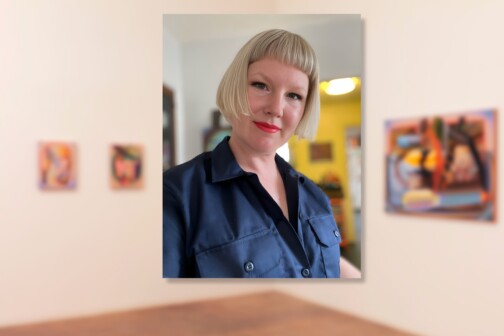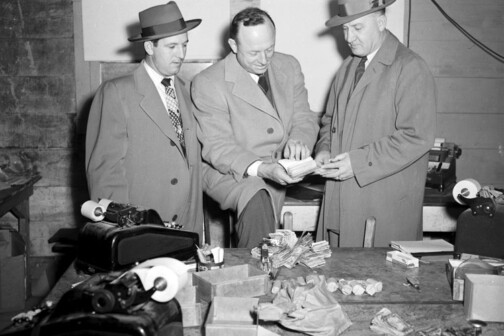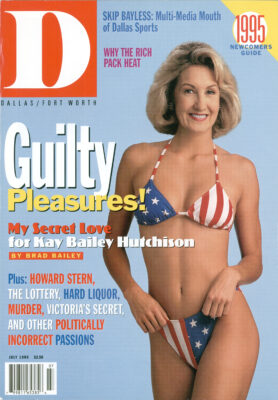LIKE BLISTERING SUMMER HEAT, CONFUSING LIQUOR LAWS are something we have learned to live with in Dallas. You can buy booze only in certain parts of town, called wet areas. The rest of the city is dry. However, some wet areas are wetter than others, while certain dry areas aren’t really dry at all. (They are sort of damp.) But hey, this is Dallas, where you had to bring your own bottle in a brown bag even at the ritziest of restaurants until 1971. Are you following? Well, join me on a beer run and maybe it will all become clearer.
Heading west on Northwest Highway from Central Expressway, there are no liquor stores in sight. But upon crossing Hillcrest, we see a Centennial liquor store. OK, it’s probably safe to assume we are in a wet area. But the nearby Tom Thumb (we’re still in the same parking lot) sells no booze at all. Why? Because now we are in a dry area, determined by an old survey line that doesn’t even run along any streets. It cuts through the parking lot and even several houses to the north.
On a stretch of Industrial Boulevard, from Corinth to Hampton, a five-minute drive will take us through 12 changes in liquor regulations. Wet turns dry, and then wet again. Then it’s beer and wine only, and then completely wet, but only on one side of the street. To understand why the wetness wanders so, we have to go back 60 years, to the formative time in Dallas’ alcohol policies.
Even before Prohibition, Texas was completely dry. In 1933, the state allowed for local-option elections, meaning communities could vote on their own wet-dry status, and over the next few years, the map was drawn. Dallas’ boundaries, though set rather arbitrarily, were Walnut Hill Lane to the north, White Rock Creek in the East, and the Trinity River in the south and west. South of the Trinity, Oak Cliff voters approved the sale of beer only. Now the courts consider these local option elections binding and specific for the areas that initially cast the vote. Annexations and redrawn precinct lines can’t change the wet/dry status without new elections.
So when the Trinity was re-routed along a straighter path to the south in the 1930s, the old, winding river channel still served as the wet line. Industrial Boulevard, built atop the old channel, thus cuts directly through the S-curves of the old river, crossing the once and future wet-dry boundary several times. In 1956, Oak Cliff went dry, but by then its boundary was the new river channel, not the old one, so the area between the two channels remained beer-only.
Finding suds in the suburbs can also be confusing. Most of the southern ’burbs- like Lancaster, Desoto, and Cedar Hill- are completely dry. Mesquite is also dry, except for its restaurant row along LBJ, where the sale of liquor by the drink is permitted. Other suburbs also allow mixed-drink sales in restaurants but prohibit liquor stores. Only Addison and the tiny town of Buckingham are completely wet, two alcoholic oases in northern Dallas County.
Of course,dry doesn’t have to mean totally dehydrated. Since 1990, a company called Unicard has made it affordable for restaurants in dry areas to become private clubs and thus serve alcohol. Unicard is a database that people can join for as little as a dollar at any one of about 300 locales in the Dallas area. That membership is then valid at all places that accept Unicard.
So there you have it. In addition to knowing where you can and cannot purchase your potent potables, you should understand the method to this madness, even though there seems to be no rhyme to its reason.
Related Articles

Restaurant Openings and Closings
Try the Whole Roast Pig at This Mexico City-Inspired New Taco Spot
Its founders may have a fine-dining pedigree working for Julian Barsotti, but Tacos El Metro is a casual spot with tacos, tortas, and killer beans.

Visual Arts
Raychael Stine’s Technicolor Return to Dallas
The painter's exhibition at Cris Worley Fine Arts is a reflection of her training at UTD—and of Dallas' golden period of art.
By Richard Patterson

Dallas History
Tales from the Dallas History Archives: Scenes from 1949, When the Mob Ruled Dallas
In 1949, streetcars still roamed Dallas' streets, the Adolphus Hotel towered over its neighbors downtown, the State Fair was still segregated, and Benny Binion wanted his money.


